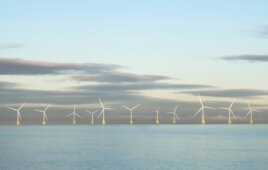This executive summary comes from Pike Research

The total ESG market will be led by North America, Europe (Western and Eastern Europe, though Eastern Europe contributed a negligible amount to the forecast), and Asia Pacific. In North America, growth will be influenced by fragilities in the grid and the desire of utilities and renewables players to hedge against their own sets of risks.
Energy storage on the grid (ESG) refers to the long-duration or bulk-energy storage of electricity. Traditionally, electricity has been a perishable good and storing it depended on storing water or air. Until recently only two technologies had been commercialized to perform the function of energy storage: compressed air energy storage (CAES) and pumped storage. Both methods are limited by geology, scale, and cost. Newer and emerging energy storage technologies – such as next-generation CAES and pumped storage, as well as advanced batteries – are changing the energy storage space with innovations in efficiency, footprint, materials science, and system flexibility.
Pike Research says it uses an applications-driven approach to analyze the ESG market. Its report forecasts the market opportunity for ESG within five applications: grid asset optimization, arbitrage, renewables integration for wind and solar (considered as separate applications), and transmission and distribution (T&D) deferral. Pike Research’s (the firm’s) emphasis on applications is useful because:
- It reflects a current trend in the ESG market of “narrowing” or specialization. Specifically, the firm has seen a significant number of strategic decisions and partnerships that reflect a narrower market focus on the part of technology vendors.
- It lets the firm focus on the actual value of the technology to the consumer – not on the value the technology is theoretically capable of delivering. This aligns better with the actual market value of ESG.
- It allows for a more precise estimation of the value of the energy storage market.
- It lets the analysis distinguish applications that are commoditized from those that are not.
Key market conditions
For ESG, these are largely split into three categories. Those that will:
- Affect the technical need for ESG
- Affect the technology mix of ESG
- Influence the revenue of ESG (i.e., market structures, regulatory environment, and business models.)
Overall, rapidly changing energy mixes will continue to introduce instability on electrical grids globally. In addition, the volatility of load profiles will challenge grid operators to deliver reliable and secure electricity. These macro conditions will encourage demand for ESG. One big challenge for ESG will be to deliver cost-effective equipment for grid stability issues.
Another challenge for the market will need to be resolved by regulators as market structures catch up with the market to acknowledge the value of ESG to grid system.
Industry Issues
Two key industry issues in the ESG space include business models and the ESG supply chain. Both of these have more to do with how the industry will successfully scale up and fully commercialize technologies and less with technology development. Business models that focus on integrating storage with existing products, delivering services instead of selling technology, and packaging ESG with other, less speculative technologies will be more successful.
Currently, sustainable business models are not possible in the energy storage industry unless specific pieces of the supply chain are fleshed out. In some cases, technology vendors are struggling to balance the inherent technology and financial risks within the storage industry. Energy storage does not have enough intermediaries in the storage industry to scale up and fully commercialize. However, Pike Research expects this to change in the next 18 months as the market continues to mature.
Market forecast
The total ESG market will be led by North America, Europe (Western and Eastern Europe, though Eastern Europe contributed a negligible amount to the forecast), and Asia Pacific. In North America, growth will be influenced by fragilities in the grid and the desire of utilities and renewables players to hedge against their own sets of risks. In Europe, the ESG market will be largely influenced by plans to invest in infrastructure and to reinforce connections between Europe’s five major balancing areas now administered by the European Network of Transmission Systems Operators for Electricity (ENTSO-E) – which represents all electric transmission system operators (TSOs) in the European Union (EU).
Another key market force in Europe will be the changing energy mix. In some cases the changing mix in Europe will provide disincentives for natural gas, although it is possible this will be remedied through reforms in market structures. The potential market in Asia Pacific dwarfs the opportunities in North America and Europe.
However, the ESG market in Asia Pacific will hinge upon the growth of total generation capacity, the growth of the acceptance of ESG as a conventional technology for the grid, and modernization. The $3,900 report covers these issues in greater detail.
Pike Research
www.pikeresearch.com
Filed Under: Energy storage, News




